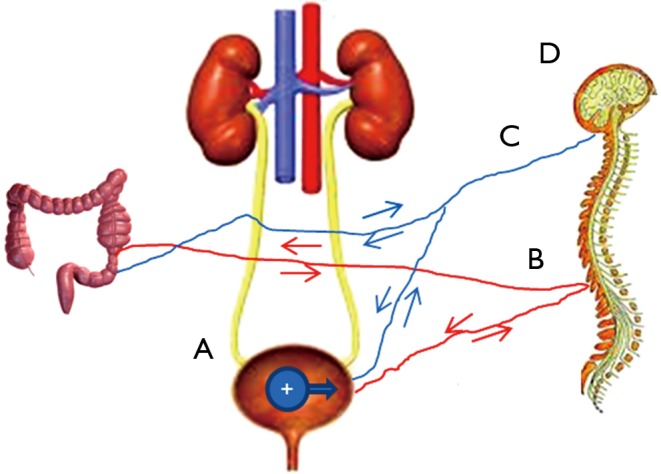Figure 2.

Schematic of mechanisms producing increased bladder permeability. (A) Organic cations in the urine neutralize the GAG layer producing increased permeability. This occurs because they are present in abnormally high amounts or Tamm-Horsfall protein, the anionic cation scavenger in urine is defective with missing glycosylation. The increased permeability allows potassium ions and other molecules to pass into the urothelium or deeper, causing irritation, triggering inflammatory cells, and sending sensory signals. Upregulation of sensory fibers occurs; (B) the sensory signaling from the bladder affects other tissues as well as the bladder to cause increased bowel permeability. Increased bowel permeability from causes within the bowel (e.g., IBS) also signals back to the bladder causing increased bladder permeability by unknown mechanisms. Communication is through the dorsal root ganglia. The pain signal is also transmitted to the brain where chronic pain can rewire the brain; (C) signaling through the vagus nerve releases neurotransmitters and cytokines that activate mast cells and macrophages that then increase bladder permeability; (D) long-term effects on the brain, such as early life stress may potentiate some individuals toward IC/PBS by mechanisms that are not well understood. GAG, glycosaminoglycan; IBS, irritable bowel syndrome; IC/PBS, interstitial cystitis/painful bladder syndrome.
